If you’re like me and love exploring the world on two wheels, you’ve probably come across the terms cyclocross and gravel bikes. At first glance, they might look pretty similar.
However, dig a little deeper, and you’ll find that they cater to different riding styles and terrains. Let’s break down the key differences between these bikes so you can decide which one fits your needs best.
Table of Contents
ToggleCyclocross vs Gravel Bike Quick Comparison Table
| Feature | Cyclocross Bikes | Gravel Bikes |
| Primary Use | Racing | Adventure and endurance riding |
| Geometry | Aggressive, high bottom bracket | Relaxed, low bottom bracket |
| Tire Clearance | Up to 33-35mm | Up to 45mm or more |
| Mounts | Minimal | Multiple for racks, fenders, bottles |
| Handling | Quick, responsive | Smooth, stable |
| Drivetrain | 1x setup, narrow gear range | 2x setup, wider gear range |
| Brakes | Disc brakes, optimized for racing | Disc brakes, optimized for endurance |
1. Purpose and Use

Cyclocross Bikes
Cyclocross bikes are all about racing. Designed for cyclocross racing, these bikes are built for short, intense rides over varied terrain—think mud, grass, sand, and pavement.
During a race, you might need to hop off and carry your bike over obstacles like barriers or stairs. So, agility and quick handling are essential.
Gravel Bikes
Gravel bikes, on the other hand, are built for endurance and versatility. They’re perfect for long rides on mixed terrain, including gravel roads, dirt trails, and pavement.
If you’re into bikepacking or adventure cycling, a gravel bike offers the comfort and stability needed for extended distances. They’re the go-to choice for riders looking to combine comfort with off-road capability.
2. Frame Geometry
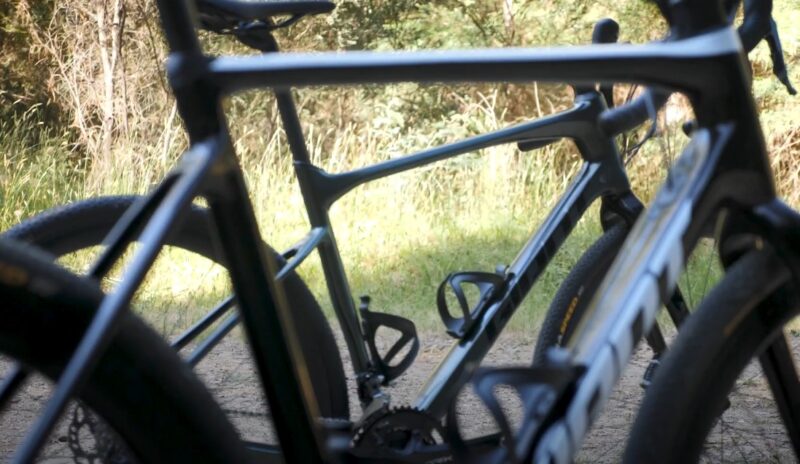
Cyclocross Bikes
Cyclocross bikes feature an aggressive geometry with a higher bottom bracket. This design provides better clearance over obstacles. They have a shorter wheelbase, which gives them quick, responsive handling.
Your riding position on a cyclocross bike is usually more upright than on a traditional road bike but more aggressive compared to a gravel bike.
Gravel Bikes
Gravel bikes come with a more relaxed geometry. They have a lower bottom bracket, which improves stability and comfort on rough terrain.
A longer wheelbase enhances stability, especially at high speeds and over uneven surfaces. The rider position is more upright, making long rides more comfortable.
3. Tire Clearance and Size
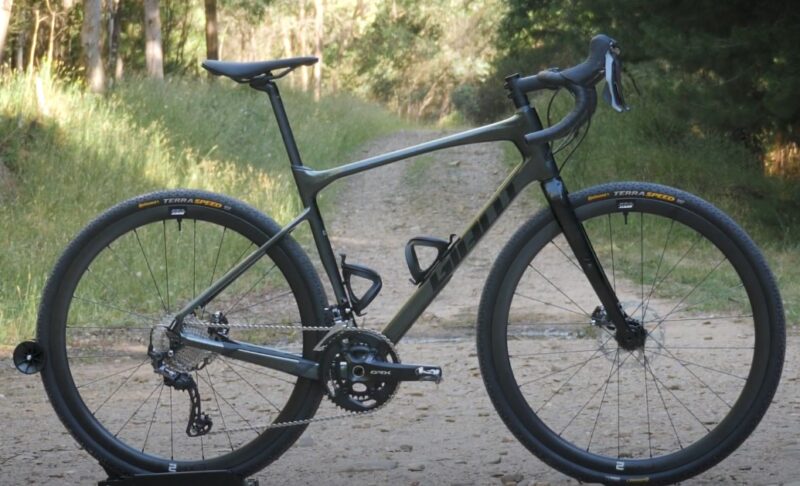
Cyclocross Bikes
Cyclocross bikes can accommodate tires up to around 33-35mm, sticking to racing regulations. The tires are usually knobby, providing maximum grip on muddy and loose surfaces.
Gravel Bikes
Gravel bikes offer more generous tire clearance, typically supporting tires up to 45mm or more. This flexibility allows for a variety of tire choices, including wider options that enhance comfort on rough terrain.
4. Mounts and Accessories
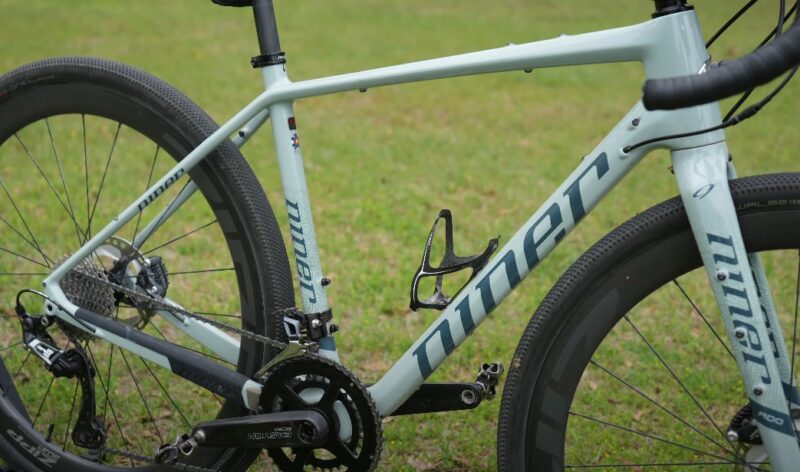
Cyclocross Bikes
In the pursuit of performance, cyclocross bikes usually have minimal mounts for accessories. Weight reduction is key, so you won’t find many racks or fenders.
Gravel Bikes
Gravel bikes shine in their versatility. They come equipped with multiple mounts for racks, fenders, and extra water bottles, making them ideal for bikepacking and long-distance touring. These features enhance their practicality for extended adventures.
5. Handling and Ride Quality

Cyclocross Bikes
The handling of a cyclocross bike is quick and sharp, tailored for the dynamic and technical nature of cyclocross courses. The ride can feel stiff because the focus is on performance and responsiveness.
Gravel Bikes
Gravel bikes prioritize a smooth and stable ride over varied terrain. Their handling is more forgiving, which helps maintain control and comfort on long, rough rides.
6. Component Differences
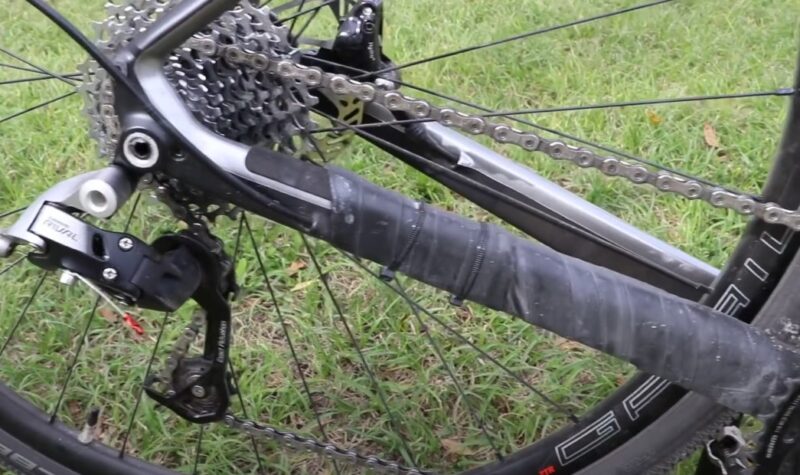
Cyclocross Bikes
Cyclocross bikes often come with a single chainring setup (1x drivetrain). This setup reduces weight and complexity and helps prevent chain drops during races. The gear range is narrower, suiting short, intense efforts.
Gravel Bikes
Gravel bikes typically feature a wider gear range, with 2x drivetrains being common. This setup allows for easier pedaling over long distances and varied terrain, making the bike more versatile for different riding conditions.
7. Braking Systems
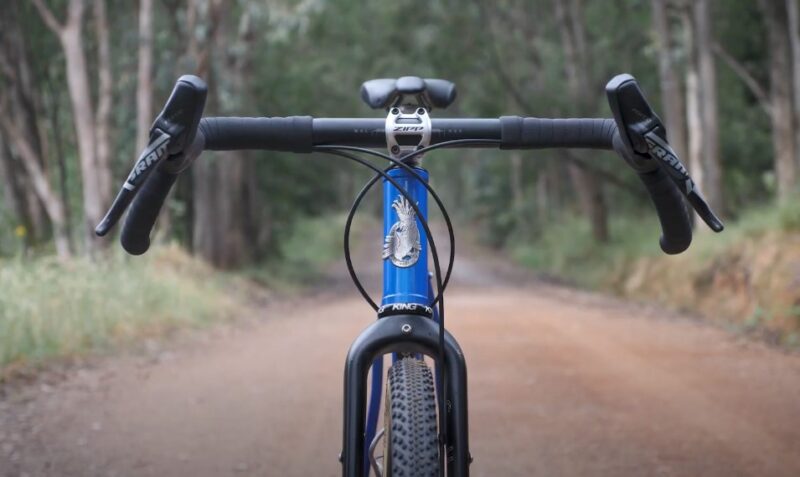
Both cyclocross and gravel bikes favor disc brakes. However, their applications differ slightly.
Cyclocross Bikes
Cyclocross bikes almost exclusively use disc brakes. They provide superior performance in wet and muddy conditions, offering the reliable stopping power needed for unpredictable cyclocross courses.
Gravel Bikes
Gravel bikes also use disc brakes, providing consistent braking performance in all weather and terrain conditions. Their braking systems are designed for reliability and ease of maintenance during long rides.
Other Notable Differences
- Handlebars: Gravel bikes often have wider handlebars with more flare to accommodate bags, enhancing control and comfort on long rides. Cyclocross bikes typically have narrower bars to benefit aerodynamics and maneuvering in races.
- Suspension: Some gravel bikes incorporate short-travel suspension forks and softail rear designs to enhance comfort over rough terrains, features not typically found on cyclocross bikes.
Which Bike Is Right for You?

Choosing between a cyclocross and a gravel bike depends on your riding preferences and the kind of terrain you’ll be tackling. If you’re drawn to the thrill of racing and need a bike that’s nimble and quick, a cyclocross bike might be your best bet.
On the other hand, if you’re looking for a versatile bike that can handle long-distance adventures on mixed terrain, a gravel bike is the way to go. Cyclocross bikes are perfect for those who enjoy the intensity of short, technical races.
Their design focuses on performance, quick handling, and the ability to navigate obstacles with ease. They’re light, responsive, and built to excel in demanding conditions. Gravel bikes, however, are built for comfort and stability over long distances.
They’re ideal for bikepacking, adventure cycling, and exploring varied terrains. With their relaxed geometry and wider tire clearance, they offer a smoother and more forgiving ride, making them suitable for extended rides and carrying gear. Difference cyclocross and gravel bikes should be the very thing that will guide your ultimate decision when choosing the right fit.
Final Thoughts
Both cyclocross and gravel bikes have their unique advantages, tailored to different riding experiences. It doesn’t matter if you’re aiming to conquer a cyclocross race or go on a gravel adventure, there’s a bike out there that fits your needs. Consider where and how you plan to ride, and let that guide your decision.
Related Posts:
- Are Shimano Clipless Pedals Good for Gravel?…
- Gravel Bike vs. Road Bike - 9 Key Differences Explained
- Cyclocross vs. Gravel Bikes - What’s the Difference?
- What Are the Spokes on a Bike For? Everything You…
- Do Dirt Bike Tires Have Tubes? - What You Need to Know
- Bike Seat Cushions - Are They Any Good? Here’s What…








